43 F. high in the Twin Cities Tuesday.
53 F. average high on April 7.
60 F. high on April 7, 2014.
.01" rain fell yesterday at MSP International Airport.
April 7, 1857: Cold snap hits United States. Snow fell in every state.
A Raw Deal
Nature
never moves in a perfectly straight line. We limp, trip and stumble our
way into spring - always two steps forward, one step back. Or is it the
other way around?
And as much as I'm looking forward to a hot,
sweaty summer up at the lake I don't mind this March flashback. Chilly
weather is reducing the threat of severe storms and babysitting the
Doppler. It also sets the stage for steady "overrunning" rain tomorrow
as warm air rides up and over a persistent wedge of Canadian air camped
out above our heads. The entire state needs a good long soaking right
about now.
Yesterday's rain brushed southern Minnesota; a few
severe storms near Rochester - a preview of coming attractions. We
temporarily dry out today before a slow-moving storm spreads a shield of
rain back into the state Thursday; half an inch of rain possible for
thirsty farms, lawn & gardens.
Sunshine returns Friday;
Saturday should renew your faith in April with highs surging into the
60s. ECMWF guidance is hinting at mid-70s and severe storms in one week.
Yes,
this damp, chilly breeze is annoying, but 40s will inoculate us from
any serious weather drama the next few days. Let's just take this one
week at a time, OK?
Transitioning Into a Wetter Pattern?
It's still too early to say with a high degree of confidence, but it
appears that we may be turning a corner with moisture as storms take a
more northerly track with a rising sun angle and expanding warmth. The
arrival of 60s and a few 70s next week should be accompanied by heavier
showers and T-storms, possibly the first severe outbreak of the season
by the middle of next week. 84-hour NAM accumulated rainfall forecast
above: NOAA and HAMweather.
Severe Outbreak Central Plains Later Today.
Our in-house TPI (Tornado Potential Index) values are poking into the
extreme range by late afternoon from near Wichita to Kansas City and
Springfield, Missouri. I wouldn't be surprised to see a few large
tornadoes touch down by the dinner hour. Source: HAMweather.
Springy Come-Back.
Skies may brighten for a time today, allowing the mercury to top 50F
(where we should be in early April). Steadier rain keeps temperatures in
the 40s tomorrow, but then the mercury takes off over the weekend as
the sun reappears - Saturday should be the nicer day to clean up the
yard and wash the car - more badly needed rain falls Sunday, but the
heaviest rains (and embedded T-storms) may hold off until the middle of
next week as temperatures spike into the 70s. A severe outbreak by
Wednesday of next week? It's way too far off to say with any confidence,
but I wouldn't be surprised.
New Interactive Storm Surge Map Helps Residents See Potential Flood Risks. Here's an excerpt of an interesting article (and useful new hurricane season tool) at
The Island Packet:
"The National Oceanic and Atmospheric Administration is testing a new
feature that lets people get a look at what kind of damage and storm
surges are possible, and using nearby Charleston for the preliminary
model.
The Experimental Storm Surge Simulator
shows a street-level view of where water could rise in a storm surge.
"Surveys of the public show there is still a consistent
mis-understanding of what the storm surge is, and how deadly it can be,"
reads the introduction to the app.
Image credit above: "Illustration
from the National Atmosphere & Oceanographic Administration's
Experimental Storm Surge Simulator showing storm surge projections at
various locations in Charleston for different hurricane scenarios." ILLUSTRATION FROM NOAA ESSS.
How Flood Insurance Could Drive Americans From Coasts.
Increasingly severe (coastal) storms superimposed on rising seas
increases the risk of damage, and the trends are already showing up in
insurance premiums, according to
Climate Central: "...
The 8 inches or so of sea level rise since 1880 is contributing to regular high tide flooding
along the Eastern seaboard and Gulf coast, including in Miami,
Washington D.C. and Virginia Beach. By the middle of this century, seas
are expected to be another four to 19 inches higher than they were at
the turn of the century, threatening tens of billions of dollars worth
of property in Florida alone. The new paper, written by Moore and NRDC
water official Becky Hayat,
lays out one vision for how Congress could re-imagine the flood
insurance program in two years, when it’s next due to be reauthorized..."
Read more here: http://www.islandpacket.com/2015/04/06/3684699_model-of-storm-surge-simulator.html?rh=1#storylink=cpy
A Super-Sized El Nino in 2015 After All?
Our on-again, off-again El Nino warming of Pacific Ocean water is very
much on again as temperature anomalies continue to rise in the central
and eastern Pacific.
NOAA CPC
is predicting overall temperature anomalies of 1.5 to 2C warmer than
average by fall and winter, which would tend to imply a milder (drier)
winter for Minnesota and the Upper Midwest. In theory. On paper. Your
results may vary.
Remembering The Great Midwest Flood of 1993.
I have vivid memories sandbagging the Racoon River in Des Moines,
marveling at how high the waters were. Here's an excerpt of a quick
recap of historic flooding that spring, courtesy of
cdapress.com: "...
Dozens
of major bridges were washed out from late June through early August of
1993. More than 5,000 barges, loaded mostly with grains and soybeans,
were stuck on the Mississippi for weeks on end. The river is normally
less than a mile wide, but by early July of 1993, it had grown as wide
in places as seven miles! In total, according to my weather scrapbooks,
more than half of the levees along the Mississippi River and its various
tributaries were broken by the surging floodwaters. In St. Paul, Minn.,
in late June of 1993, the downtown airport virtually "disappeared"
under several feet of water. Town after town along the Mississippi River
southward past severely flooded St. Louis, Mo., saw their levees break
and their houses and crops washed away. The entire town of Valmeyer,
Ill., was moved to higher ground some 500 feet above the level of the
Mississippi..."
Photo credit above: "
US
Army Corp of Engineers photo of the Missouri River's damage to US
Highway 63, Jefferson City, Missouri, near the Missouri Capitol building
during the "Great Flood of 1993". National Guardsmen created sandbag
levees in the parking lot, but the building was still several feet above
the water line." Courtesy of Wikipedia, which has more information
here.
Digital Billboards Warn Drivers of Tornado Risk. This makes sense, especially considering you're a sitting duck sitting in your vehicle.
KFOR.com in Oklahoma City has the video and story - here's an excerpt: "...
It
may be the last opportunity to warm somebody that they need to be
careful as they travel down the road.” said Lamar General Manager, Bill
Condon. “We have the ability to get the message out in minutes.” There
are 28 digital billboards around Oklahoma City, 24 of them will be used
for tornado warnings because they are located on highways around
town..."
Better Method For Forecasting Hurricane Season?
Is a new model out of the University of Arizona capable of a
consistently more accurate/reliable hurricane forecast? I guess we'll
find out soon. Here's an excerpt from
ScienceDaily: "...
The
team developed the new model by using data from the 1950 to 2013
hurricane seasons. They tested the new model by seeing if it could
"hindcast" the number of hurricanes that occurred each season from 1900
to 1949. "It performed really well in the period from 1949 to 1900,"
Davis said. "That's the most convincing test of our model." Other
investigators have estimated that damages from U.S. hurricanes from 1970
to 2002 cost $57 billion in 2015 dollars -- more than earthquakes and
human-caused disasters combined for the time period..."
Under Debate: Social Media's Value For Delivering Hurricane News.
Can we rely on Twitter, Instagram and Facebook for the biggest weather
stories? How do we insure that consumers are getting information from
trusted, verified sources? Here's an excerpt of a very interesting story
at
The Palm Beach Post: "
Their
grandparents learned of hurricanes in the newspaper, their parents on
CNN. Today’s young people might get their news from their pals on
Facebook. And what about the generation after that? That’s what really
scares some weather forecasters and emergency managers. “Twitter can be
wrong and we can’t,” Jim Forsyth, news director of San Antonio news
radio station WOAI, told a session of this week’s National Hurricane
Conference in Austin, Texas..." (Hurricane Irene file image: NASA).
Will Turning Sea Water Into Drinking Water Help Drought-Hit California.
Desalination plants are still prohibitively expensive and
energy-intensive. But Santa Barbara is dusting off an old initiative to
turn sea water into drinking water, a trend which may expand to other
coastal cities suffering through prolonged drought. Here's a clip from
NPR: "...
That
briny waste is one of many concerns raised by environmentalists and
other critics of desalination plants like this one and others that are
being planned and built along the California coast. "The biggest concern
about desalination is that it is expensive, it's energy-intensive and
it has a lot of side effects — a lot of unintended consequences to
marine life both from the intake and the discharge," says Marco
Gonzalez, the executive director of the Coastal Environmental Rights Foundation. Right now, the sources of electricity available to run desalination plants are not environmentally friendly..."
File photo credit above: "
In
this March 11, 2015, file photo, a worker climbs stairs among some of
the 2,000 pressure vessels used to convert seawater into fresh water
through reverse osmosis in the western hemisphere's largest desalination
plant in Carlsbad, Calif. The Carlsbad Desalination Project, scheduled
to start operations in late 2015, is expected to provide 50 million
gallons of fresh drinking water a day." (AP Photo/Gregory Bull, File).
This Is The Back-Up Plan If All Our Crops Are Wiped Out.
Well there's a lovely thought, and odds overwhelmingly favor this will
never happen. But it's good to have an insurance policy, right? Here's a
clip from a story at
The Washington Post: "...
Here’s
where the sci-fi ends: There are no aliens here, and no clones.
Instead, the containers are full of humble seeds, frozen and preserved —
hopefully forever (or long enough, anyway). Ultimately, there’s enough
room to store 2.25 billion of them. Scientifically inclined — and
worried — humans built this. It’s the pinnacle of an ancient quest to store seeds so as to preserve agricultural diversity and give a backstop against any crop disaster..."

Anchorman: "A Dumb Job?"
Every business is experiencing disruption, including journalism, and
I'm not sure our kid's kids will put anchormen and women on pedestals
the way some of us did growing up. I can't say I agree with everything
in this article - the very best local anchors (Shelby and Magers come to
mind) worked their way up from reporter to anchor. They were
journalists first, and news-readers second. They actually earned a
position of trust. Many in the print media have been historically quick
to bash television news any chance they get, so I take some of this with
a grain of envy-saturated salt. Here's an excerpt of an interesting
read at
New York Magazine: "...
For
all the histrionics, this incident of media blood sport was much ado
about not so much. The network-news anchor as an omnipotent national
authority figure is such a hollow anachronism in 21st-century America
that almost nothing was at stake. NBC’s train wreck played out as
corporate and celebrity farce rather than as a human or cultural tragedy
because it doesn’t actually matter who puts on the bespoke suit and
reads the news from behind a desk..."

The Inside Story of the Civil War For The Soul of NBC News.
Vanity Fair
underscores the fact that being a news executive (or producer or
"talent") at NBC News hasn't been much fun in recent years - here's an
excerpt: "...
It
had been a tumultuous period for NBC’s news division, as had the entire
four years since the Philadelphia cable/phone/Internet giant, Comcast,
took over NBCUniversal, as the company is officially known. There was
Ann Curry’s tearful flameout on Today; David Gregory’s long slide to his
exit from Meet the Press; the strange firing after less than three
months on the job of Jamie Horowitz, an ESPN executive brought in to fix
Today; not to mention ratings declines at several of the division’s
centerpiece shows, including Today and Meet the Press..."
TODAY: Mostly cloudy, closer to average. Winds: E 10. High: near 50
WEDNESDAY NIGHT: Cloudy, rain arrives late. Low: 38
THURSDAY: Rain likely. A bit greener out there. High: 44
FRIDAY: Slow clearing and milder. Wake-up: 34. HIgh: 57
SATURDAY: Jolt of spring fever. Breezy with lukwarm sun! Wake-up: 35. High: 65
SUNDAY: Showers, possible T-storms. Wake-up: 46. High: 63
MONDAY: Sunny intervals, still pleasant. Wake-up: 43. High: 61
TUESDAY: Scattered showers, few T-showers possible. Wake-up: 42. High: near 60
Climate Stories....
The Global Warming "Pause" is More Politics Than Science. Here's the intro to a story at
The ABC Network in Australia: "
Over the past 17 years, the Earth has warmed rapidly, accumulating energy at a rate equivalent to more than four atomic bomb detonations per second.
That's over 2 billion atomic bombs worth of heat built up on our planet
since 1998. As discussed in a new book by one of us (Dana Nuccitelli) Climatology versus Pseudoscience,
research has shown that much of the heat buildup during that time was
deposited in the deep layers of the Earth's oceans, temporarily keeping
it from the surface..."
Let's Call It: 30 Years of Above-Average Temperatures Means The Climate Has Changed. Here's an excerpt from
The Conversation: "...
As
you can see in the graphic above, ocean temperature doesn’t vary as
much as land temperature. This fact is intuitive to many people because
they understand that coastal regions don’t experience as extreme highs
and lows as the interiors of continents. Since oceans cover the majority
of the Earth’s surface, the combined land and ocean graph strongly
resembles the graph just for the ocean. Looking at only the ocean plots,
you have to go all the way back to February 1976 to find a month below
average. (That would be under President Gerald Ford’s watch.)..."
Graphic credit above: "
Temperature history for all Februaries from 1880-2014." NCDC .
Acknowledging Climate Change, County by County. The Yale Project on Climate Change Communication has an
interactive map
that shows the level of interest/engagement broken down by couunty or
congressional district. Overall 63% of Minnesotans believe warming is
taking place and man is the primary driver of this observed warming.
Nationwide the percentage is an identical 63%.
New NORAD Chief: Increased Russian Patrols, Climate Change Raise Strategic Concerns.
Yes, The Air Force is acknowledging the obvious - arctic ice is
shrinking (and thinning) and that has geopolitical implications; here's a
clip from an interview at
Colorado Public Radio: "...
Well,
the Arctic ice pack is receding. I mean that's clear. We see that every
year. We see it receding and so the question is now, 'As it recedes,
how much more commercial activity is going to be up there in the form of
transportation... Resource extraction: Will companies and nations go up
there for resource extraction, you know, oil, gas, minerals?'
... Clearly, the climate is changing and the ice pack is receding. The
question is, ‘What does that mean in the future?’ And that’s what we’re
trying to determine."
Photo credit above: "
A U.S. Air Force F-22 intercepts a Russian bomber near Alaska." (Courtesy of U.S. Air Force).
British Daily's Campaign To Prevent Climate Change Raises Bold Questions About Role of Press Advocacy. Here's the intro to an interesting post at
Unsocial Media: "
The
Guardian, the London daily that has risen from a respected but fringe
player on the British political scene to a major transatlantic voice of
liberal thought, did something notable and gutsy a few weeks ago, and
just about nobody on this side of the ocean paid any attention. Flanked
by stories and commentaries, Alan Rusbridger, the editor credited with
leading the Guardian’s rise, announced
March 6 that his organization was launching a campaign intended to head
off the climate catastrophe that the scientific consensus has concluded
is unavoidable without deep changes in public policy and industrial
practice..."
Climate Change Deniers Are In Retreat.
Personally I'm not so sure, although I continue to see hopeful signs
that a critical mass of Americans understand what's really going on.
Here's an excerpt of a story at
The Washington Post:
"There is no denying it: Climate-change deniers are in retreat. What
began as a subtle shift away from the claim that man-made global warming
is not a threat to the planet has lately turned into a stampede. The
latest attempt to deny denial comes from the conservative American
Legislative Exchange Council, a powerful group that pushes for states to
pass laws that are often drafted by industry. As my
Post colleagues Tom Hamburger, Joby Warrick and Chris Mooney report, ALEC is not only insisting that it doesn’t deny climate change — it’s threatening to sue those who suggest otherwise..."
70% of Western Canadian Glaciers to Disappear by 2100.
The Toronto Star has more details - here's a link and excerpt: "
Go
see Canada’s glorious glaciers while you still have a chance. Seventy
per cent of Western Canada’s glaciers — some of them popular
destinations in Alberta and British Columbia — will likely be gone by
the end of this century, according to shocking new projections published
in Nature Geoscience Monday. “These glaciers are an important part of
our landscape and we take it for granted . . . the landscape isn’t going
to look the same,” said Garry Clarke, a glaciologist at the University
of British Columbia and one of the study’s authors..."
Photo credit above: Todd Korol. "A
guide holds a pole showing tourists how much the Athabasca Glacier
melted since the previous year at the Columbia Icefield in Jasper
National Park, Alberta. Last year, a Parks Canada manager said the
glacier is losing more than five metres of ice every year and is in
danger of disappearing within a generation."

Urban Sprawl, Cars Hamper Cities' Best Efforts on CO2.
This gets to the core of many skeptics' concerns just beneath the
surface. "You're attacking my way of life - you're telling me how to
live!" I live in the suburbs - maybe I'm rationalizing the obvious: not
all of us will live in cities and bike or walk to work. Which means
we'll find cleaner, more renewable ways to commute and power our homes
and lives. Here's an excerpt from
Climate Central: "...
A Boston University study published Monday in the Proceedings of the National Academy of Sciences shows that a major push in cities like Denver
to build dense housing, better transit systems and more bike lanes in
their urban core doesn’t necessarily lead to lower per-capita CO2
emissions. That’s because suburbs continue to sprawl and residents there
still drive to work..."
File photo above: Richard Vogel, AP.
Study: D.C. Residents Worry About Global Warming More Than Anyone Else in U.S. Here's an excerpt from
The Capital Weather Gang: "...
Levels
of concern about global warming have been strongly tied to political
party affiliation. A Yale University study conducted last year found
that 81 percent of Democrats are worried about global warming, compared
with only 19 percent of conservative Republicans. About 75 percent of
registered voters in the District are Democrats, which plays a key role
in local global warming attitudes..."
Democracy vs. Psychology. Why People Keep Electing Idiots. Possibly my new favorite headline of the year, courtesy of
The Guardian. Here's an excerpt: "...
What’s
going on here? Logically, you’d want an intelligent person who
understands the best approach and methods for running a country in the
best possible way. But no, people seem drawn to demonstrations of
questionable intellectual abilities. There are a wide variety of
ideological, cultural, social, historical, financial and other factors
involved, because politics incorporates all of these things, but there
are also some known psychological processes that may contribute to this
phenomenon..."
Wet Basement Last Year? Blame Climate Change.
The swings are becoming even more extreme over time, especially
precipitation and "whiplash", going from drought to flood, back to
drought, much faster than in the past. Here's an excerpt from a story at
The Star Tribune: "...
Even
though this spring has been unusually dry, climatologists say
homeowners should get used to volatility — wild swings in weather will
be more common as climate change begins working its effects on the
atmosphere. “The climate has been changing,” said Peter Snyder, an
associate professor of atmospheric science at the University of
Minnesota. “It’s pretty clear that we’re seeing more extremes.” While
last year’s wet spring doesn’t mean Minnesotans should expect flooded
basements every year, Snyder said, his work indicates that intense
weather events are becoming increasingly frequent in the Upper Midwest..."

The Incredible Decline of Arctic Sea Ice - Visualized. Here's an excerpt of a Chris Mooney article at
The Washington Post: "...
The
downward trend usually draws the most attention in September, because
that’s when overall ice extent reaches its annual low, and the lows have
been getting lower and lower. But in a new visualization,
the Post’s Kennedy Elliott uses data from the National Snow and Ice
Data Center to show that in their records going back to 1979, there’s
actually been a plunge, over time, for ice extent for each individual
month of the year..."

What Evidence Would Pursuade You That Man-Made Climate Change is Real? Here's an excerpt of a fact-filled, URL-rich essay at
Reason.com: "...
To
restate: The existence of man-made warming does not mandate any
particular policies. So back to the headline question: If generally
rising temperatures, decreasing diurnal temperature differences, melting
glacial and sea ice, smaller snow extent, stronger rainstorms, and
warming oceans are not enough to persuade you that man-made climate is
occurring, what evidence would be?"
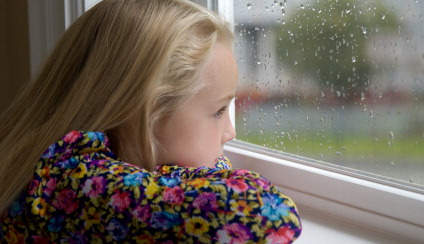
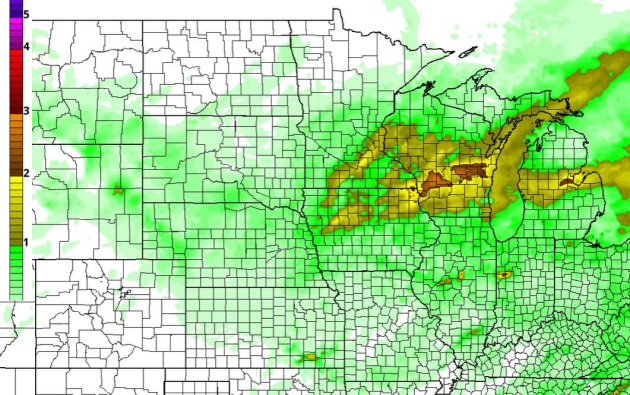

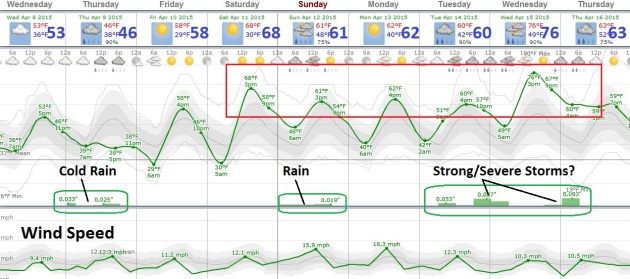
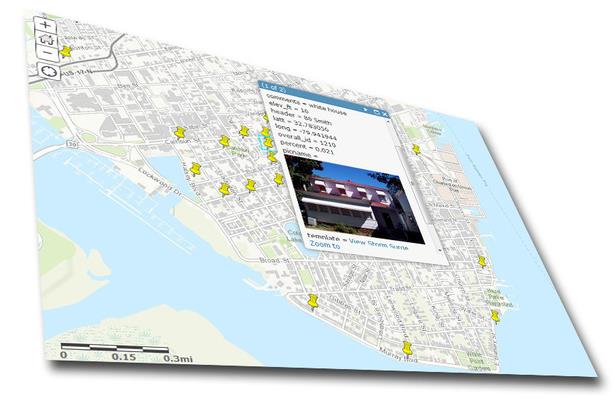
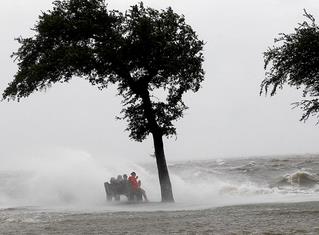
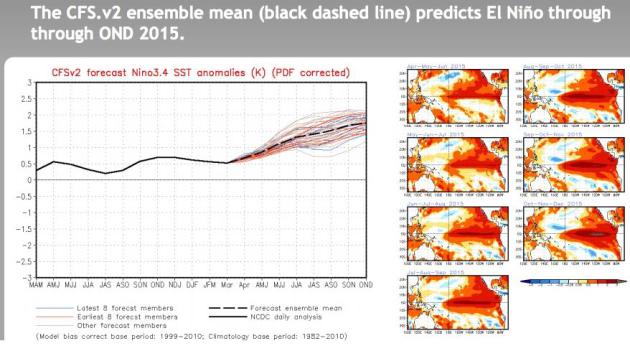
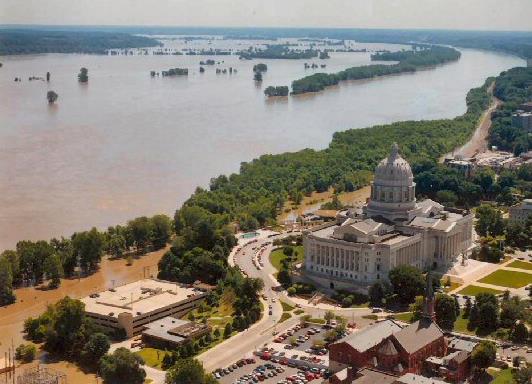


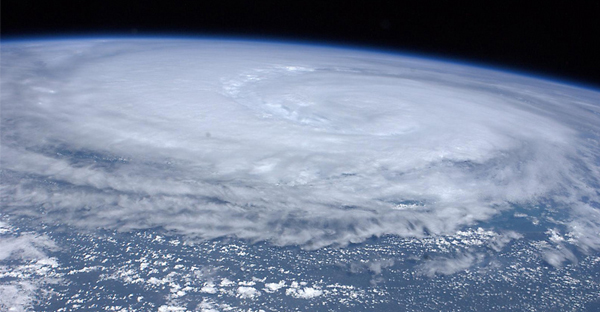
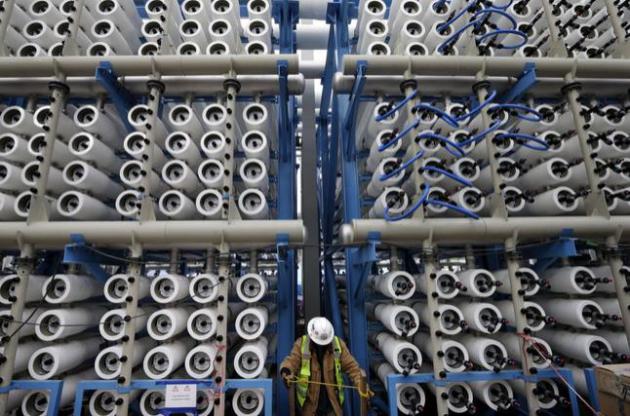
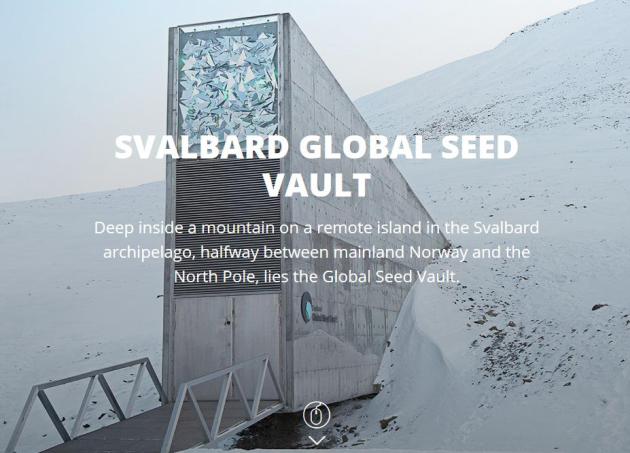


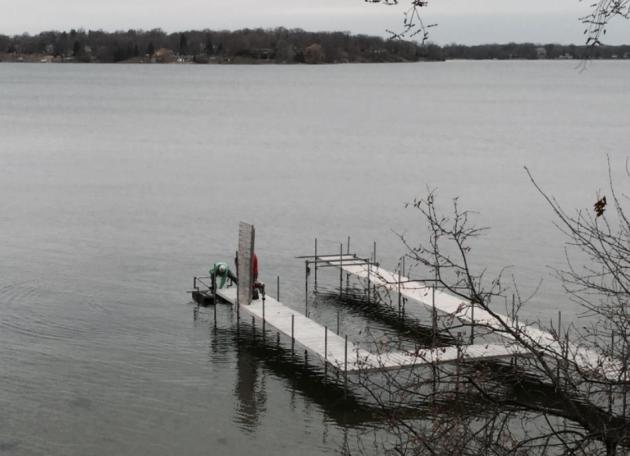
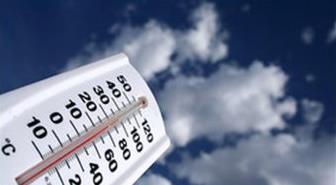

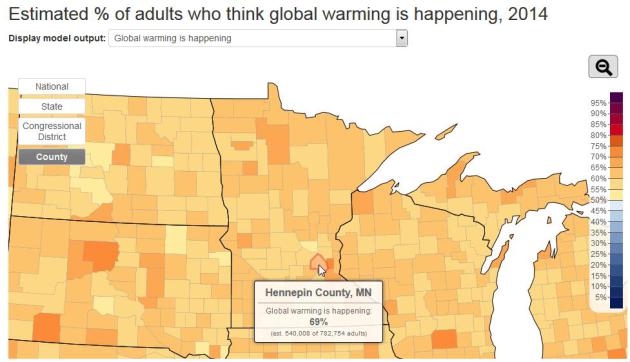



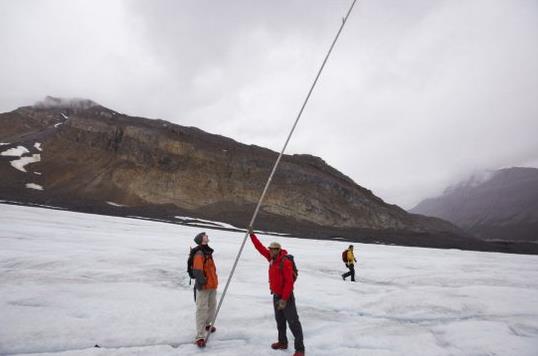

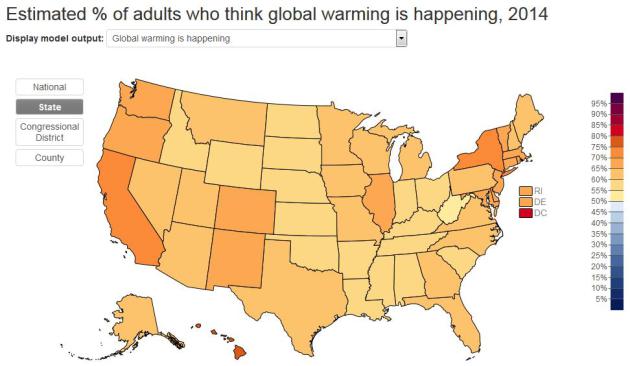
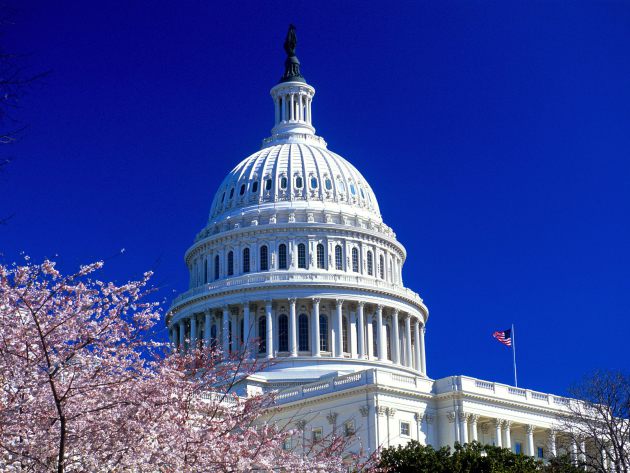
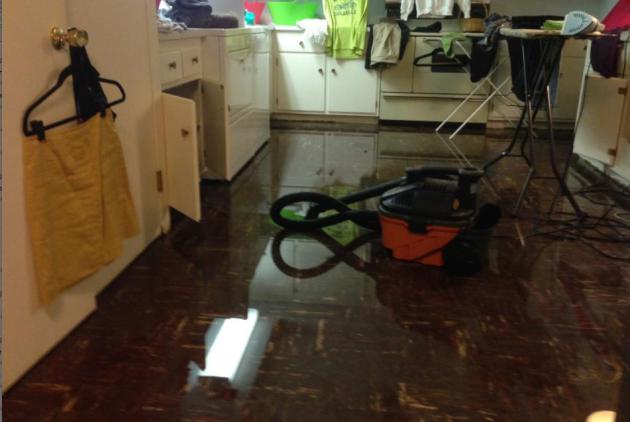

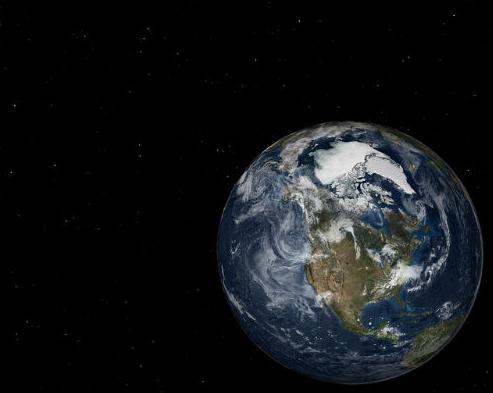
No comments:
Post a Comment